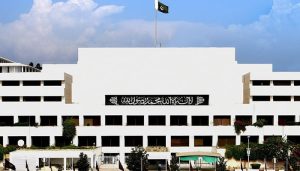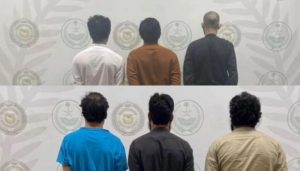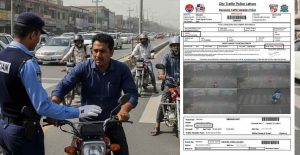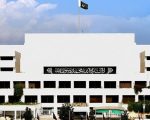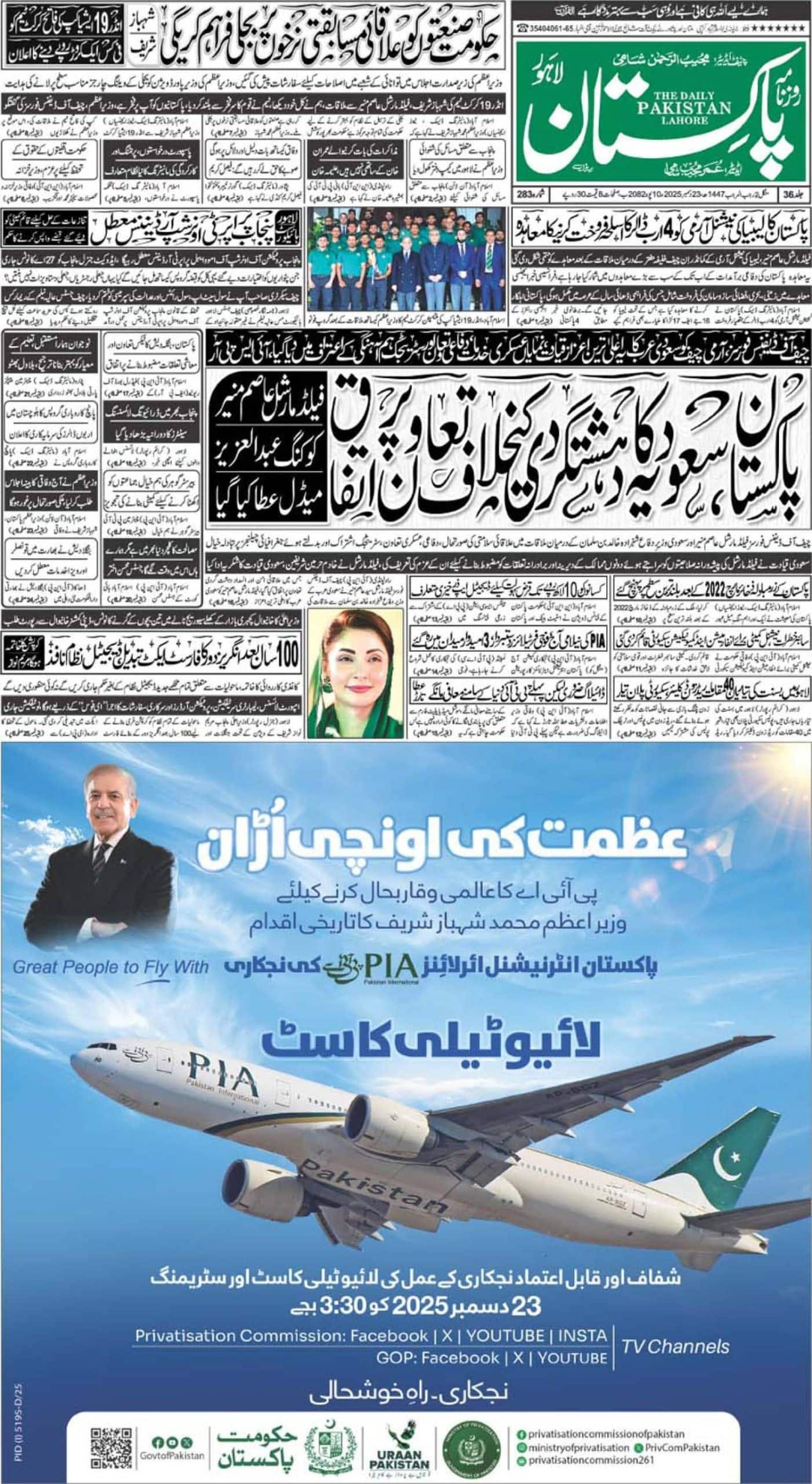Finance Minister Ishaq Dar on Friday unveiled annual federal budget in the National Assembly for the next fiscal year. It was the fifth consecutive budget presented by Ishaq Dar.
Following is the full speech delivered by Federal Finance Minister Ishaq Dar in the National Assembly on Friday:
Bismillahir-Rehmanir-Rahim
Mr. Speaker,
1. Today I present the fifth consecutive budget of the PML(N) government with Allah’s (SW) blessings and mercy.
2.It is for the first time that a fifth consecutive budget is being presented by the same Prime Minister and Finance Minister. This is a reflection of strengthening of democracy for which the entire nation can feel proud. And it is with great humility that I thank Allah (SW) that He has given this opportunity to an ordinary person like me.
3. Before I go into the details of the next financial year’s budget, I would like to give a brief resume of the distance that we have traversed in the last four years. It would not be an exaggeration on my part to say that in June 2013 Pakistan was on the brink of default on its financial commitments. Our Forex reserves were at an historic low covering only two weeks’ worth of imports. Large payments were falling due and what to say of the commercial banks even the multi-lateral development partners were shy of undertaking any new business with Pakistan. The FBR revenues had grown only by 3.38% for that year, expenditure was high and the result was a fiscal deficit of over 8% of GDP. Energy outages were pandemic, the load-shedding hours in a day were longer than those in which electricity was available. Load shedding in cities was for 12 to 14 hours while in villages was 16 to 18 hours. The writing on the wall was obvious. From macroeconomic perspective, Pakistan’s economy was declared as unstable internationally.
4. Today Pakistan is on the cusp of a high growth trajectory. Our GDP has grown this year by 5.3% which is a 10-year high. Foreign exchange reserves are at a comfortable level, sufficient to cover about 4 months of imports; tax revenues have increased by 81% over the last four years translating into an average annual increase of 20%; since 2013 credit to private sector has increased by over five times; fiscal deficit will be around 4.2 percent; there has been over 40% increase in imports of capital goods this year; gas availability has improved, and load-shedding for industry has been eliminated and substantially reduced for commercial and domestic sectors – Inshallah next year will be the year of complete elimination of load shedding.
5. The writing on the wall is obvious even today – only the message has changed. Today globally credible institutions like PriceWaterhouseCoopers have said that “Pakistan economy is set to be among the 20 largest economies (G20) of the World by 2030”. The whole of the nation deserves to take credit for this impressive turnaround and we thank Allah (SWT). Without His help this would not have been possible in such a short time.
Mr. Speaker,
6. I would like to take this opportunity to congratulate the Parliament, the Prime Minister Nawaz Sharif, and indeed the entire nation that after a long-time Pakistan has this year borrowed loans only for national development. Earlier we were not only borrowing for our national development needs but also for our non-development expenditure. This was leading us to a downward economic spiral where we had to borrow to cover our expenses and a very large percentage of the budget was being spent on debt servicing. This turnaround has been made possible by prudent fiscal management, continued focus on enhancing revenues and reducing nondevelopment expenditure. This is not an ordinary achievement. Borrowing for development is acceptable for any country or an organisation as the socio-economic returns outweigh the cost of borrowing. Investing in the people of Pakistan and its infrastructure will lead to even higher, sustainable and inclusive growth.
7. I would like to inform this house that as per the party manifesto of PML(N), Pakistan has successfully completed its reform programme. During this period difficult key structural reforms in the country have been implemented. Completion of the programme has strengthened confidence of the international community in government’s economic agenda. The government has put the country on the path of self-sustenance which is being internationally recognised and is reflected in the improved ratings by all major rating agencies including Moody’s, S&P and Fitch.
Where we were 4 years’ ago and where we are today?
Comparative Economic Performance 2012-13 vs. 2016-17
Mr. Speaker,
8. I would now present before this august House the main highlights of Pakistan’s economic performance in the last four years:
(1) Real GDP Growth at 5.28% this year is the highest in the past decade. Four years’ ago, the economic growth was 3.68%. Considering that the World economy is likely to grow by 3.5% this year, Pakistan’s economy is performing better than most countries in the World. There has an improvement in every aspect due in Pakistan due to economic growth. For the first time the size of the economy has surpassed $300 bilion;
(2) Alhamdolilah, our agriculture sector has turned around. The sector has performed impressively this year. Compared to last year’s stagnation this sector has registered a robust 3.46% growth. All major crops including Wheat, Cotton, Sugarcane and Maize have registered healthy growth. This turnaround in agriculture from stagnant growth is a result of the Prime Minister’s Kisaan package announced in September 2015 and the extraordinary measures approved by this house as part of budget 2016-17;
(3) Industrial production grew by 5.02% and businesses are now hiring additional workers. (4) Services sector – which includes banks, retail, transportation, housing, etc. – grew by 5.98%; (5) On average, income of each Pakistani has increased by 22% since fiscal year 2012-13. Per capita income today stands at $1,629 as compared to $1,334 four years ago;
(6) Inflation was on average 12% between 2008-13. In this current year inflation is expected to be around 4.3%;
(7) Fiscal deficit: The government followed a policy of fiscal consolidation because of which fiscal deficit reduced from 8.2% to the current year’s 4.2%. This was achieved through higher revenue collection through improved administration and broadening of the tax base, undoing decades-old concessionary SRO and curtailing non-development expenditure of the government;
(8) FBR Revenues: In fiscal year 2012-13 FBR collection was Rs.1,946 billion. For the current year the target is Rs.3,521 billion. This represents a historic increase of 81% in the last 4 years with average annual growth of 20%. Tax to GDP ratio which was 10.1% in fiscal year 2012-13 is likely to increase to 13.2% this year;
(9) Policy rate of State Bank of Pakistan has come down from 9.5% in June 2013 to the current 45-year low of 5.75%. Similarly, mark-up rates of Export Refinance Facility have been reduced from 9.5% in June 2013 to 3% in July 2016. In addition, the mark-up rate on Long Term Finance Facility has been gradually reduced from 11.4% in June 2013 to 6% for exporters and 5% for textile sector. This has led to a spurt in credit to the private sector;
(10) Resultantly Credit to private sector has grown to Rs.507 billion till May of this year, as compared to Rs.93 billion in fiscal year 2012-13, resulting in expansion of business activity in the country;
(11) Agriculture credit was Rs.336 billion four year’s ago which at the end of 2016 was Rs.600 billion and is targeted to increase to Rs.700 billion during the current financial year;
(12) Imports: Imports have been recorded at $37.8 billion during July-April showing an upward trajectory compared to the same period last year. This vibrancy in imports is attributable to over 40% increase in capital machinery, industrial raw material and petroleum products and the increased investment under the CPEC projects focused on energy and infrastructure sectors. All of this augurs well for Pakistan’s economy in the near future;
(13) Exports during the first ten months of this year have shown an overall minor decrease of 1.28% compared to 7.8% decline during the same period last year. This reversal has been the result of timely support by the government to exporters in shape of a comprehensive package of Rs.180 billion in January 2017 and efforts of our exporters;
(14) Foreign Exchange Reserves: In June 2013 foreign exchange reserves held with the State Bank were $6.3 billion which included short-term swap of $2 billion for which payments were to be made within weeks. This means that the real reserves were $4.3 billion. Our foreign exchange reserves currently stand at a comfortable level of $16 billion despite a larger than expected trade deficit mainly due to increased import of capital goods. If we include foreign exchange deposits with commercial banks, the total foreign exchange reserves of the country have increased to around $21 billion;
(15) Exchange Rate: Inter bank rate of dollar on 30th June 2013 was Rs.99.66. Within a few months this rate increased to around Rs.111. After better economic management and increase in foreign reserves the exchange rate reverted to Rs.99. Due to political disturbances between August and December 2014 the rate again increased close to 104.80. Since then this rate is the same;
(16) Remittances: Over the past four years, Pakistani workers and professionals working abroad have contributed a substantial amount of remittances which increased from $13.9 billion to $19.9 billion. This 40% increase was made possible due to government’s revival and payment of outstanding dues of Pakistan Remittance Initiative. The remittances for the first ten months of the current FY stand at $15.6 billion and are expected to grow in the last two months due to Ramazan and Eid despite challenging economic situation in the gulf region. I thank the hard-working Pakistanis abroad who used banking channels to send money to their relatives and friends in Pakistan and I appeal them to use banking channels to send remittances so that they can be contribute to Pakistan’s economy;
(17) Pakistan Stock exchange: The merger of the three stock exchanges was completed in January 2016 after successful resolution of issues pending for over a decade. Since then, Pakistan Stock Exchange has graduated from frontier to emerging markets in the Morgan Stanley Capital International (MSCI) Index. It has been declared as Asia’s best performer and 5th best performing market in the World by Bloomberg. It is note worthy that the index has increased from 19,916 on 11 May 2013 to over 52,000 points currently. And during this period market capitalisation has increased from $51 billion to $97.3 billion depicting a 90% increase;
(18) Registration of New Companies: This year 5,855 new companies have been incorporated till March. Four years ago, in the entire financial year 3,960 companies were incorporated;
(19) Enactment of Economic Laws: For an economy to unleash its growth potential, there has to be in place an enabling legal and regulatory environment. Realising the constraints that a less than effective legal framework imposes on efficient governance and service delivery, the government has in its tenure completed 24 pieces of legislation in different sectors of the economy including; Benami Transactions Prohibition Act, Special Economic Zones Amendment Act, Deposit Protection Corporation Act, Credit Bureau Act, Corporate Restructuring Companies Act, National Energy Efficiency and Conservation Act, AntiMoney Laundering Act, Gas Theft Control and Recovery Ordinance, and Limited Liability Partnership Act. 10 new pieces of legislation are currently in the process which would lead to further augment the enabling legal environment required for a flourishing economy;
(20) Companies Law: The Parliament has approved the companies law 2017 only this week. I thank congratulate both the houses. This law has replaced the 33-year old Companies Ordinance of 1984. This is a major reform to consolidate the provisions / laws relating to companies so as to encourage and promote corporatisation in Pakistan based on the best international practices. This law will simplify procedures creating ease of starting and doing business and protect investors. It addresses issues related to protection of minority shareholders and creditors, eases regulatory compliance requirements for smaller companies, and among others provides relaxation for registration of agricultural promotion companies for the development of agriculture sector. Keeping in view the importance of women, the new law will allow women membership in boards of directors of listed companies;
(21) Ease of Doing Business: Reforms have been undertaken to make it easy for firms to do business in the country. As a result, Pakistan’s ranking in the World Bank’s ease of Doing Business index improved from 148 to 144 in the report launched in 2016, based on performance in 2015. Pakistan was also recognised as one of the top ten reforming countries in the World. On the basis of additional reforms undertaken during the period 2016, Pakistan expects further improvement in the ranking of World Bank’s Doing Business report to be published in October 2017;
(22) To encourage documentation in the economy, for the first time registered prize bonds of Rs.40,000 have been introduced. Registered bonds of different denominations will be introduced in FY 2017-18;
Mr. Speaker,
9. The above accomplishments are the result of timely but difficult decisions that the government has taken over the past four years. We are resolved to continue the journey towards structural reforms with stabilisation measures. I would now highlight some of the key reforms that have been undertaken this year:
(1) We have signed the letter of intent to join ‘Open Government Partnership’ initiative. The OGP is a global partnership of over 70 countries including most of the developed countries. While a country can show its intent to join, its membership is by invitation only when you meet its criteria. The fact that we met 15 of its 16 criteria; and Pakistan was formally invited to join OGP on the 7th December 2016, which itself speaks of the major improvements that Pakistan has made in transparency and openness in its governance;
(2) OECD’s Multilateral Convention: In the last budget speech, I said that we were trying our best to sign the OECD’s Multilateral Convention on Mutual Administrative Assistance in Tax Matters. This was based on our commitment to fight tax evasion and avoidance. In January 2014, after Federal Cabinet’s approval we started the journey. Since then, the Coordinating Body (CB) of the Multilateral Convention evaluated Pakistan’s laws. Based on their recommendations, this Parliament made changes to income tax laws through Finance Bills 2015 and 2016 after which Pakistan received invitation to join the Convention in July 2016. On 14th September 2016, representing Pakistan I signed the joining documents of the Convention. As a result of joining this Convention, in the matters of tax at an international stage, we will be able to receive details in coming years. This will help us improve our tax governance and tax avoidance will be effectively tackled;
(3) Agreement on Avoidance of Double Taxation (AADT): We have also now signed the revised agreement on Avoidance of Double Taxation with Switzerland. Pakistan’s existing Agreement with Switzerland signed in 2005, and enforced in 2008, was deficient for meaningful exchange of information with reference to the internationally accepted standard. Therefore, this government took the initiative in August 2013 to renegotiate the AADT and with consistent efforts, was able to update the Article on exchange of information in the treaty. The revised treaty is now in the process of ratification and shall become effective thereafter. Under the agreement for the purposes of tax, details will be available regarding financial books and banking. I would also like to point out that renegotiations took longer than expected because the Swiss side was seeking extraordinary concessions in return. Alhamdolilah, we have been able to successfully include these negotiations without conceding any concessions.
10. These reform efforts have improved Pakistan’s image abroad and sent a message to the international community that Pakistan’s believes in joining the World in promoting good governance, transparency, and accountability at all levels.
Mr. Speaker,
11. The brief overview of main economic performance indicators that I have just presented clearly demonstrate that over the past four years’ after achieving macroeconomic stability our government’s focus as per the Vision of the Prime Minister Nawaz Sharif is higher, inclusive and sustainable growth path.
Mr. Speaker,
12. I have mentioned some of the structural reforms undertaken during the past four years. From next year, our top priority will be to consolidate and build on the economic gains achieved so far. In this regard, I will now discuss next year’s economic targets.
Mr. Speaker,
13. Economic targets of FY 2017-18:
(1) Increase in real GDP growth of 6%;
(2) Investment to GDP 17%;
(3) Development budget of Rs.1,001 billion
(4) Inflation below 6%;
(5) Budget deficit at 4.1% of GDP;
(6) Tax to GDP ratio at 13.7%;
(7) Foreign exchange reserves level that can cover a minimum of 4 months of imports;
(8) Net public debt to GDP ratio below 60% of GDP;
(9) Continuation of targeted social interventions
Initiatives to achieve targets – Main Elements of Budget Strategy
Mr. Speaker,
14. In order to achieve the above targets, we have defined a strategy which includes the following details:
(1) FBR revenues are targeted to increase by 14% while the Federal expenditures will grow by 11%;
(2) Non-tax receipts of the Federal government are budgeted to increase by 7%.
(3) By keeping the current expenditure under tight control, we will be able to create substantial space for development. Federal PSDP for the next year is budgeted at Rs.1,001 billion. This is 40% higher than revised estimates of Rs.715 billion for the current financial year.
If we add the provincial ADPs the outlay for development of FY 2017-18 would be a whopping Rs.2.1 trillion;
(4) At the same time, current expenditure will be contained below the level of inflation;
(5) New initiatives are being announced for agriculture, financial sector, exports, textile, social sector and employment. This is being done with the aim to boost our economic activity even further. The purpose is to increase job prospects and incomes of the people. I will present these initiatives in a short-while;
(6) Tax incentives are being announced with the aim to give facilitation to the agriculture, SMEs, and IT sectors;
(7) Under the leadership and personal supervision of Prime Minister Nawaz Sharif through Cabinet Committee on Energy, approximately 10,000 MW of electricity will be added to the national grid by summer 2018. This will Inshallah eliminate load shedding;
(8) Investments will be made to speed up the process of development of Gwadar including development of airport, hospital and desalination plant;
(9) Around 5.5 million women-led families in the country who do not have economic means for sustenance will continued to be provided with cash transfer of Rs.19,338 per annum. For this purpose, Rs.121 billion are proposed to be allocated to Benazir Income Support Programme. This allocation has increased to 300% of Rs.40 billion in fiscal year 2012-13. During this period, the number of recipient families have increased from 3.7 million families in 2013 to around 5.5 million. In addition, around 1.3 million primary school children are receiving cash grants;
(10) The state will continue to subsidise bills of the low-income domestic consumers up to 300 units per month in shape of electricity subsidy. For the farmers in Balochistan, the Federal Government will pay a portion of their electricity bills to run agriculture tube wells. The Federal Government’s will continue to provide electricity subsidies on tube-wells in Balochistan. Off-peak rate of Rs.5.35 per unit for agriculture tube-wells will continue in the FY 2017-18. An amount of Rs.118 billion has been proposed in the FY 2017-18 for these measures;
(11) The Prime Minister’s youth schemes which include business loan scheme, interest free loan scheme, training scheme, skill development programme, fee reimbursement, and laptop programme will continue. For this purpose Rs.20 billion is proposed in the fiscal year 2017-18.
Special Initiatives 2017-18
Mr. Speaker,
15. Under the leadership of the Prime Minister we are committed to serve people of this country. This nation deserves a better and brighter future. In this regard, I will now present special initiatives:
Welfare Schemes
16. BISP Beneficiary Graduation Program – Grants to Self-Sustaining Individuals: Previously, the poverty incidence in the country was measured under the Food-Energy Intake methodology in which the poverty headcount that was 34.7% in 2002 reduced to 9.3% in 2014. However, Pakistan has now also adopted a new methodology based on the Cost-of-Basic-Needs (CBN) formula of World Bank. Under this methodology, the poverty headcount which was over 64% in 2002 has reduced to 29.5% in FY 2014. While the government is providing support to people with limited income, it is also encouraging the beneficiaries of Benazir Income Support Programme to learn skills and start their own enterprises so that they can graduate out of the scheme. To finalise this transition the government is announcing a new scheme. In the FY 2017-18, BISP beneficiary families who are willing to start their own businesses will be provided with training as well as a one-time cash grant of Rs.50,000 to start their own business and become productive members of society. Initially this grant is proposed to be provided to 250,000 families. The beneficiaries will therefore, be able to graduate from this programme.
17. Off grid solutions in small cities: In order to facilitate provision of electricity to remote areas and small cities where there are no transmission lines, the Government, in partnership with the World Bank, will introduce solar-powered offgrid electricity system for residents of small towns and cities in sparsely populated areas of the country with special focus on Balochistan.
Agriculture Sector
18. Agriculture is the mainstay for the people and the economy of Pakistan. Keeping in view the primacy of agriculture in the rural economy the Prime Minister announced a Kisaan Package in 2015 with a total financial outlay of Rs.341 billion which included direct support to rice and cotton farmers, reduced taxes on agriculture machinery from 45% to 9%, reduced Sales Tax on cold chain machinery from 17% to 7%, a tax holiday for agriculture delivery chain for three years, provision of mark-up free loans to the farmers for solar tube wells, reduced sales tax on pesticides and seed, reduced mark-up for agricultural loans, subsidised crop insurance and increased volume of agricultural loans
19. In order to give further boost to agriculture sector, a number of new supportive initiatives were taken in budget 2016-17 including; crop loan insurance scheme, livestock insurance scheme, concession of customs duty on the dairy, livestock and poultry sectors, elimination of sales tax on pesticides, exemption of customs duty on cool chain machinery and silos, and reduction in fertilizer prices. As a result, the staple agriculture input of urea fertilizer reduced to Rs.1,400 per bag as compared to Rs.1,800 last year and DAP prices reduced from Rs.4,200 per bag to Rs.2,500 per bag. Reduction in prizes of fertilizer was achieved through a mix of subsidies and tax concessions. The outcomes of these measures are evident in increase in offtake of fertilizers and production of major crops. As a result of these measures a stagnant agriculture sector has grown by 3.46% in FY 2016-17. All of these schemes and initiatives shall continue in next FY 2017-18.
20. The following new measures are being proposed in the next year’s budget:
(1) Reduced mark-up rates: Mark-up rates currently charged ranges between 14% to 15%. I am happy to announce that from 1 st July 2017, ZTBL and National Bank of Pakistan will launch a new scheme for small farmers with holdings of 12.5 acres who will be provided agricultural loans at a reduced rate of 9.9% per annum. The other features of the scheme are:
i. Small loan of up to Rs.50,000 per farmer will be provided;
ii. Two million loans shall be provided by ZTBL, NBP and other banks;
iii. State Bank of Pakistan will monitor the implementation of this new scheme.
(2) Enhancement in the target of agriculture credit:
Credit availability for the small farmers is a major constraint in the use of farm inputs. In order to facilitate the farmers, the volume of agriculture credit is being enhanced to Rs.1,001 billion from the last year’s target of Rs.700 billion which will be an increase of 43%. My Parliamentarian colleagues may kindly note that this target exactly matches Federal development budget of Rs.1,001 billion for the FY 2017-18;
(3) Maintaining Fertilizer Prices:
i. As a further measure to support farmers, the government has already decided to sell the existing stock of imported Urea Fertilizer available with NFML at a concessional Rs.1,000 per bag;
ii. In order to create ease of disbursement of subsidy on DAP, it has been decided that DAP will be subject to fixed sales tax. As a result, GST is being reduced from Rs.400 to Rs.100. This will have a subsidy impact of Rs.13.8 billion;
iii. Through reduction in tax rates and subsidy the price of per bag of Urea shall be maintained up to Rs.1,400 per bag in the FY 2017-18. This will have a subsidy impact of Rs.11.6 billion;
iv. Prices of NP, NPK, SSP and CAN fertilizers will also be maintained at their current price levels through appropriate tax adjustments
(4) Use of Land Revenue Records for Mortgage Financing:
In order to facilitate the farmers in obtaining credit from banks, the State Bank of Pakistan shall take steps to align the banking system with the Land Record Management Information System for mortgaging of a property by the banks/farmers. Use of these automated records will help farmers in obtaining credit;
(5) Plants Breeders Rights Registry is being established to register new high quality seeds. This is aimed at increasing crop yields in the country;
(6) Cheap electricity for agri-tube wells: The government will continue provision of subsidised tariff on agri-tube wells at the rate of Rs.5.35 per unit in FY 2017-18. This is estimated to cost around Rs.27 billion in FY 2017-18;
(7) Production Index Units will be increased from Rs.4,000 to Rs.5,000. This will facilitate farmers to obtain maximum credit from the banks;
(8) Agriculture Tax Relief Measures:
i. Combined harvesters: There is a growing trend of using combined harvesters. However, the combined harvesters currently being imported are 20 – 30 years old and are almost junk. As a result, the harvesting losses can be as high as 10%. In order to reduce these losses, it has been decided to encourage the import of newer agriculture machinery. Accordingly, it has been decided to reduce the customs duty and sales tax at import stage to 0% 5 years on new and up to 5 years old combined harvesters machinery.
ii. Removal of GST on imported sunflower and canola hybrid seeds – GST on imported sunflower and canola hybrid seeds is being removed;
iii. Reduction of sales tax rate on imported machinery for poultry- Sales tax rate from 17% to 7% on certain imported machinery/equipment for poultry is being made;
iv. Sales tax on import and local supply of agricultural diesel engines between 3 to 36 Horse Power for tube-wells currently having rate of 17% is proposed to be exempted.
Export Promotion and Textile
Mr. Speaker,
21. Textile sector is the backbone of Pakistan’s economy and significantly contributes in the employment, usage of raw material, exports and economic growth. In view of its importance, the Government has provided special packages for the this sector since 2013. I would like to recapitulate some of the important measures:
(1) Mark-up rate on Long Term Financing Facility stands reduced from 11.4% to 5%;
(2) Duty free import of textile machinery is allowed;
(3) Uninterrupted supply of electricity and gas is ensured for the textile sector;
(4) Technology Up-gradation Fund (TUF) Scheme 2016-19 for the textile sector has been introduced;
(5) Prime Minister’s package for exporters was announced in January 2017 in which the centre-piece is the textile sector;
(6) The government made five export oriented sectors – including textile, leather, sports goods, surgical goods and carpets – as part of zerorated sales tax regime last year. This will continue during the next financial year;
(7) Similarly duty free import of textile machinery will continue.
22. All the measures announced in FY 2016-17 will be continued in FY 2017-18. Maintaining our past tradition of supporting the textile sector, following measures are proposed in the FY 2017-18:
(1) To stabilise cotton prices in the country, a system of cotton hedge trading for the domestic cotton will be initiated in consultation with stakeholders;
(2) In consultation with public and private stakeholders, the government will launch Brand Development fund for textile sector;
(3) The approval process of establishment of 1,000 stitching units has been completed and its implementation will start during FY 2017-18 and shall be completed in three years;
(4) Textile Ministry will launch the first ever online textile business/trade portal for textiles using B2B (business to business) and B2C (business to consumer) mode. This will bring Pakistan textiles’ value chain in line with global marketing practices.
23. Pakistan’s exports have suffered due to slow-down in global trade and reduction in commodity prices. To increase exports, the government implemented a number of initiatives which will also continue for the next year:
(1) Mark-up rates of Export Refinance Facility have been reduced from 9.5% in June 2013 to 3% in July 2016. In addition, the mark-up rate on Long Term Finance Facility has been gradually reduced from 11.4% in June 2013 to 6% in 2015. These initiatives have resulted in reduction of input costs for exporters.
24. In addition, new initiatives are as follows;
(1) The custom duty on raw-hides and skins will be reduced to zero;
(2) Stamping foil used in producing high value added finished leather will also be exempted from customs duty;
(3) Rice exporters are facing difficulties in marketing due to long distances from their potential market. In order to facilitate the export of rice, it is being decided in principle to allow warehousing of rice outside Pakistan. Ministry of Commerce, State Bank and Rice Export Association of Pakistan will develop details of this scheme.
Housing Sector
25. Risk Sharing Guarantee Scheme: There is over 1 million shortage of housing units in the country. Every year an additional demand of 300,000 units is being added to this gap. Availability of long-term financing is a major hurdle. The banks are shy of offering long-term financing. In order to overcome this hurdle to housing loans, Risk Sharing Guarantee Scheme for low-income housing will be launched. Under this scheme, the Government will provide 40 percent credit guarantee cover to Banks and DFIs for home financing for up to Rs.1 million. Rs.6 billion have been allocated for this purpose. It has been decided that this facility will also be made available through micro-finance banks.
Infrastructure Finance
26. To fulfil the needs of infrastructure, the government has increased development spending on permanent basis. The government has consistently increased its development spending to match the financing needs of infrastructure sector. In addition to financing for public sector infrastructure the government is also facilitating private sector investment and finance in infrastructure through a range of policy instruments and regulations. These include a Public Private Partnership framework, new prudential regulations for infrastructure finance and development of new institutions and instruments.
(1) Pakistan Development Fund (PDF) has been created which will be made fully operational soon. PDF will provide long-term infrastructure financing for commercially viable public sector and PPP projects. The international development partners have expressed their interest to provide further support through PDF;
(2) Pakistan Infrastructure Bank (PIB): Pakistan Infrastructure Bank (PIB) will also be established to provide infrastructure financing for commercially viable private sector projects. This effort will be spearheaded by the IFC with a 20% equity of the Government through PDF, while the remaining share will be private sector. The Bank is expected to assist in introducing innovative project financing tools such as building domestic infrastructure bond market and creating contingent financing products which include credit guarantees, credit default swaps, foreign currency liquidity facility and refinancing options;
(3) Public Private Partnership Act: The PPP authority bill has been enacted by the Parliament recently. This Act provides a regulatory framework for promotion of financing public-private-partnership projects in the country. This will also cater to the requirement of viability gap funding of large sized public sector projects.
Financial Sector
27. In recent years, our financial sector has demonstrated good performance. To further strengthen the financial sector in the country following measures are being taken:
(1) Financial Inclusion: In order to increase access to financial services for the vast majority of the people, the government is implementing the National Financial Inclusion Strategy. For the next year, the following initiatives are being proposed:
i. A Rs.8 billion fund will be created at the State Bank of Pakistan to provide loans to low-income segments through microfinance banks;
ii. In order to facilitate transactions through mobile banking, egateway systems, mobile banking, the Government is establishing a state-of-the-art e-gateway systems at the State Bank of Pakistan at a cost of Rs.200 million. Technical training and handholding of the service delivery organisations shall also be undertaken through this project;
iii. Exemption from withholding tax on Cash Withdrawals by Branchless Banking Agents- exemptions on withholding tax will be given on withdrawal of cash from branchless banking;
v. Pakistan Micro Finance Investment Company: The Government of Pakistan in 2016 launched Pakistan Microfinance Investment Company (PMIC) jointly with DFID and KFW to augment the availability of capital for Micro Finance institutions. It is estimated that this will lead to doubling of small loans;
(2) Disaster Risk Management Fund: This fund has been created with the main aim to provide disaster risk management and preparedness assistance to communities. An Endowment Fund of Rs.12.58 billion has been created.
Small and Medium Enterprises (SMEs)
28. SMEs are the backbone of any economy. Unfortunately, the growth of SMEs is stunted in Pakistan. Any growth that we witness is in the informal sector. The following new measures are being announced:
(a) Access to finance for SMEs: The biggest constraint of the SMEs sector is access to credit. Banks are generally reluctant to offer credit to the SME sector because of high risk attached to the sector. In order to enable banks to provide financing to SME sector, the Government is planning to introduce Risk Mitigation Facility for Small and Medium Enterprises through a Rs.3.5 billion fund to be established in the SBP. The facility will cater to both Islamic and conventional banking products;
(b) Innovation Challenge Fund: Investment in new technologies is imperative to give impetus to small businesses to keep pace with the changing market requirements. Technologies are involved at all levels of industry and supply chain uses continuous upgrade and improvement to maintain profitability. To cater this requirement of SMEs, the Government is announcing establishment of an Innovation Challenge Fund with Rs.500 million. This fund will be professionally managed in collaboration with the key technology universities of Pakistan;
(c) Secure Transaction registry for Movable Property: In order to encourage SME and agriculture lending the Government has passed Financial Institutions Secure Transactions Act 2016. The law provides for establishment of an electronic registry which will enable the small borrowers in SME and agriculture sector to obtain small loans by pledging their moveable property. Federal Government shall establish the registry during the next financial year.
Information Technology
29. From agricultural revolution to the industrial revolution, the World is now undergoing an information revolution. It is leading to the use of Information Technology in every sector of human activity be it communication, banking, trading, learning, entertainment, e-commerce, government and management. Just as machines have extended man’s mechanical power and his convenience and comfort, Information Technology is extending man’s mind or brain or intellectual power. In future, the gap between industrialised and non-industrial countries will become less pronounced than the one between IT enabled societies and others. The Government of Pakistan is cognizant of this challenge and has taken a number of measures in past and we will continue with similar measures. New measures for this sector are as follows:
(a) The Government will set up a IT software park in Islamabad with the help of Korean Government at a cost of 6 billion rupees. The financial arrangements for this have been concluded and the construction work shall start soon;
(b) The start-up software houses shall be exempted from Income Tax for the first 3 years;
(c) Exports of IT services from Islamabad and other Federal territories shall be exempted from Sales Tax;
(d) IT export houses/ companies shall be allowed to open Foreign Exchange Accounts in Pakistan on the condition that deposit in these accounts shall only be allowed through remittances from abroad in respect of their export earnings. They will be allowed to use these accounts for meeting business related payments outside Pakistan;
(e) Mobile phones are an important element in providing IT connectivity. The mobile telephony is heavily taxed. It has been decided to provide a relief to common man by reducing the withholding income tax on cell phone call from 14% to 12.5% and Federal Excise Duty from 18.5% to 17%. We hope that in the same spirit the provincial government shall also reduce the rate of sales tax on mobile telephony;
(f) In order to encourage use of smart / android phones – custom duty shall be reduced from Rs.1,000 to Rs.650;
(g) Import duty is being reduced on mobile telecom products.
Development Plan – PSDP
Mr. Speaker,
30. Our development agenda for this year continues to be in line with the vision of the Prime Minister for achieving higher, sustainable and inclusive growth, with the aim to reduce poverty, build up human capital, improve infrastructure, balanced development, improve food security, water and energy security. The Federal Government’s development expenditure is now over three times compared to that of Rs.324 billion in 2012-13. The Federal PSDP is being increased to Rs.1,001 billion – which when compared with the revised estimates of Rs.715 billion, is 40% higher than last year. The total size of the development budget of the Federal Government and that of provinces is Rs.2,113 billion up from revised estimates of Rs.1,539 billion (Federal Rs 715 Billion and Provincial ADPs Rs 824 Billion). This means that the overall government sector has geared up to enhance its share of development spending by 37%. This will result in creation of millions of jobs. Increase in development expenditure will also lead to increase in investment by the private sector.
31. As we all know, development of infrastructure and energy has generally been neglected in the past. Our government has completely reversed this trend. Today, most of the Federal development budget is allocated for roads and communication infrastructure, and energy. This is a major shift in our economic policy and this shift is the foundation of our future economic growth projections. Infrastructure has been allocated 67% of the total development outlay. Highest priority has been accorded to transport and communication sector with an allocation of Rs.411 billion including Rs.320 billion for national highways, Rs.43 billion for railways and Rs.44 billion for other projects including aviation schemes.
32. The housing and population census is currently underway after 19 years but we do not anticipate any major shift in age composition. Youth under the age of 20 will continue to be the largest portion of our population. Therefore, our development plan is focused on development in human and social capital, education, health, empowerment of women, poverty alleviation, job creation and addressing inequality.
Mr. Speaker,
33. I would like to highlight the key programmes of Federal Government’s development budget:
Energy
34. Being an energy deficient country, Pakistan is unable to actualise its economic potential. By 2018 Inshallah 10,000 MW of additional electricity will become part of the national grid. In addition, financial close have taken place for 15,000 MW of electricity generation projects beyond 2018. In this regard, the government is proposing Rs.401 billion for power sector development including investment of Rs.317 billion to be undertaken by WAPDA for the next year. A new programme called ‘Energy for All’ is being introduced with an initial outlay of Rs.12.5 billion. Some of the key projects in which the government will invest are as follows:
(1) Rs.76.5 billion have been allocated for the two LNG based power plants in Balloki and Haveli Bahadurshah. Both projects will be completed during the year, and generate 2,400 MWs of electricity;
(2) Rs.54 billion have been allocated for Dasu Hydro Power project. In stage-I the project is envisaged to generate 2,160 MW of electricity;
(3) Rs.21 billion have been allocated for construction of Diamer Bhasha Dam – Lot 1 which will generate 4,500 MW of electricity;
(4) For Neelum Jehlum Hydro Power Project Rs.19.6 billion have been allocated. Through this project 969 MW of electricity will be generated. This project shall also be completed during the year;
(5) Rs.16.4 billion have been allocated for completing fourth extension of Tarbela Hydel Power which will generate 1,410 MW of electricity;
(6) Rs.16.2 billion have been allocated for installation of 1,200 MW coal fired power plant in Jamshoro;
(7) In addition, work on two Karachi Nuclear Power Projects with combined capability of 2,200 MW and Chashma Civil Nuclear Power plant with 600 MW capacity will be continued;
35. The gap between generation and demand of electricity is only one facet of the challenge that we face. In the past, no significant investments have been made in the areas of transmission and distribution. The result is that even if we improve our generation, we will not be able to deliver electricity to the consumer. Since this year we are taking emergent measures to rectify the situation. The Matiari Lahore transmission line is being built. This is backed by a heavy investment in grid-stations and distribution lines across the country.
Water
36. Pakistan is likely to become a water scarce country if investments in this sector are not made. The government is therefore, placing increased emphasis on building dams and canals / water courses. Other than the large hydro power projects that I have mentioned above, the government is allocating Rs.38 billion for the development of water sector. Key projects such as extension of right bank outfall drain (RBOD – II), RBOD – I and Kaachi Canal will be given the largest share in the water sector portfolio. Priority will be accorded to completion of Kaachi Canal. Collectively, these three projects will be allocated Rs.17.7 billion. In addition, a number of water sector projects in Balochistan, Khyber Pakhtunkhwa, Punjab and Sindh will be continued to address the water shortage in the provinces.
National Highways
37. Pakistan’s geographical location provides a comparative advantage in connecting the regional countries. Over the past three years’ the government has focused on building deficient infrastructure with the view to translate the comparative advantage into sustainable economic growth. For the next year, we propose a massive outlay of Rs.320 billion as compared to Rs.188 billion allocated in the outgoing year. This represents the largest increase of 70% for development of roads, motorways, highways and bridges. The investment is being enhanced from Rs.51 billion in 2013. Key projects of this sector are as follows:
(1) Rs.48 billion have been allocated for 230 KM Lahore-Abdul-Hakeem section;
(2) Rs.35 billion have been allocated for 387 KM Multan-Sukkur section;
(3) Rs.2.5 billion have been allocated for Sukkur-Hyderabad section. This project is being undertaken with private sector partnership;
(4) Rapid progress is underway on Karachi Hyderabad motorway. One part of this has been inaugurated;
(5) Rs.38 billion have allocated for construction of Hakla to Yarik D.I Khan Motorway;
(6) Rs.10 billion have been allocated for construction of FaisalabadKhanewal expressway (184 KM);
(7) Burhan Havelian expressway is allocated Rs.3 billion;
(8) Rs.26 billion have been allocate for Thakot to Havelian;
(9) Rs.2.7 billion are allocated for restoration of Dera Ismail Khan Mughal Kot and Zhob road;
(10) Rs.2.5 billion have been allocation in Balochistan for Khuzdar and Panjgoor – Hoshab, Bisma, Sohrab Section and Gaward Turbat Hoashab section
Railways
38. Improving Railways infrastructure and improving its services is an important policy initiative of the government. Railways provides cheap, reliable and fast mode of transport. Over the past four years, an impressive turnaround has been achieved. Each year revenues are increasing, passenger and freight services are being improved, and new locomotives and rolling stock are being added. The government is fully committed to reinvigorate our national asset. Accordingly, Rs.42.9 billion have been proposed for the next year’s budget. Allocations for the next year in the key projects include:
(a) Rs.15.8 billion for the procurement / manufacturing of 75 Nos new locomotives;
(b) Rs.4.5 billion for the procurement / manufacturing of 830 high capacity bogie freight wagons and 250 passenger coaches; and
(c) The backbone of Pakistan’s infrastructure is the Peshawar to Karachi Railways – technically called the ML-1. A Memorandum of Understanding has been signed with China for its improvement and upgradation. This is a massive project which will introduce the next generation of railways in Pakistan;
(d) Rs.4.2 billion for preliminary design / drawings for upgrade / rehabilitation of ML-1 line and establishment of dryport near Havelian have been allocated in next year’s budget.
Human Development
39. Human development occupies a central focus in Vision 2025. The government will continue to invest in this area. For this reason, allocations in the Higher Education Commission are proposed to be increased from Rs.21.5 billion in the current year to Rs.35.7 billion in the next financial year. In addition to PSDP, HEC will be allocated Rs.60.2 billion for recurrent budget. For the Ministry of National Health Services, Regulations and Coordination allocations have been increased from Rs.25 billion to Rs.49 billion. This means that investment is being doubled as compared to the outgoing year. A new programme for hospitals with the cost of Rs.80 billion is being started for which Rs.8 billion have been allocated for next year. In addition, the Phase-II of Prime Minister’s national health programme is being launched with the total cost of Rs.10 billion. Investments in vertical health programmes including EPI, Family Planning and Primary Health care and Population welfare programmes are being enhanced as compared to the last year.
40. Two-thirds of all ailments are water-borne. Clean drinking water is a cine quo non for improvement in the public health. A special programme by the name of ‘Clean Drinking Water for all’ is being launched for which Rs.12.5 billion are proposed to be allocated for the next year’s budget. Furthermore, Rs.30 billion are being proposed for the Prime Minister’s SDG programme which would focus on national commitments to improvement in the social indicators.
Development of Gwadar
41. Development of Gwadar is fundamental to development of China-Pakistan Economic Corridor. A comprehensive plan is being implemented for the road link networks, expansion and modernisation of the airport, and development of the area. 31 projects for development of Gwadar are provided in 2017-18 for this purpose which include projects such as implementation of Gwadar master plan, New Gwadar international airport, a 200-bed hospital, 200 MW power generation, and desalination plant.
42. CPEC projects would enter into their third year of implementation during 2017-18. Funds to the tune of Rs.180 billion have been proposed for CPEC and its supporting projects during the next financial year.
Special Areas
43. For fast track development in Special Areas, Rs.62 billion have been allocated. On the direction of the Prime Minister, the development funds for Azad Jammu and Kashmir and Gilgit Baltistan have been increased from Rs.25.75 billion in FY 2016-17 to Rs.43.64 billion for the FY 2017-18 – which is a historic increase of 69%, and Rs.26.9 billion are being allocated for Federally Administered Tribal Areas (FATA).
Peace and Security
44. On the directions of the Prime Minister an operation was started in September 2013 to bring back joys of Karachi. Very positive results have been obtained through this.
45. Pakistan is a frontline state in the global ware against terror. We as a nation have in both men and material suffered heavy losses. In June 2014 the Government decided to launch a major offensive against the last safe heavens of the terrorists in North Waziristan and tribal areas, and the Pak Military started operation Zarb-e-Azb. Nation is proud of the fact that Pakistan’s brave armed forces defeated covered enemies who would attack in hiding. Some were killed, some were captured while some ran away. This victory is the result of hard work of our valiant soldiers. Today the entire World faces terrorism but no military has had such a comprehensive victory as Pak Army did. Our Jawans spent time away from their lovedones even in difficult times, embraced Martyrdom, got disabled but they did not lose courage and at last we succeeded. Terrorists were eliminated from Waziristan and other tribal areas. At times the terrorists cross border but face our brave offices and valiant officers.
46. On behalf of the Prime Minister, to recognise the brave sacrifices of brave pillar, I announce today that a 10% increase will be given on the pay of all officers and Jawans as special allowance. This allowance will be in addition to the increase in pay that will be announced.
47. Large operations like Zarb-e-Azb require vast sums. This is our national duty against terrorism for which provision of resources is the responsibility of the entire nation. For this reason, over the past three years the government has been paying Rs.90 to Rs.100 billion each year directly or indirectly. Directly for the spending on military operations and indirectly on the rehabilitation, return, reconstruction of the area. In this regard, the National Security Committee recommended that 3% of Gross Divisible Pool should be allocated for this national duty. This matter is under discussion in the CCI and NFC.
48. Similarly, for Kashmir, Gilgit Baltistan and FATA discussions to allocate 3% of Gross Divisible Pool are underway with the provinces. In the last National Economic Council meeting the Prime Minister of AJK, the Chief Minister of Gilgit Baltistan and the Governor of Khyber Pakhtunkhwa as the President’s Agent for FATA had made an impassioned plea that they were also part of Pakistan. They also have a right on the divisible pool.
49. I would like to clarify that the delay in decision of 3+3 of the Gross Divisible Pool for this purpose, has been the cause for delay in the finalising the NFC Award. I would request my fellow parliamentarians to lend their support vis-à-vis the provincial governments for this just and fair allocation.
Mr. Speaker,
Budget Estimates 2017-18
50. I would now like to present key budget numbers for the budget year 2017-18:
(a) The total revenue is estimated at Rs.5,310. This includes FBR tax estimate of Rs.4,013 billion as compared to revised estimate of Rs.3,521 billion. As compared to revised estimates of FY 2016-17 the total revenue is being increased by 12.1%. While the FBR tax revenue is estimated to increase by 14%;
(b) Out of the total revenues, the provincial governments share is estimated to be Rs.2,384 billion as compared to Rs.2,121 billion revised estimates for 2016-17, showing an increase of about around 12.4%. These resources will be utilized by the provincial governments in enhancing human development and security of the people.;
(c) After transfer to provincial governments, the net revenue of the Federal Government is estimated at Rs.2,926 billion in 2017-18 as compared to revised estimates of Rs.2,616 billion in the current financial year.
(d) Total expenditure for FY 2017-18, is budgeted at Rs.4,753 billion compared to the revised estimates of Rs.4,256 billion for 2016-17, showing an increase of 11.7%. Out of the total expenditure highest increase is accorded to the development budget.
(e) The defence budget is proposed at Rs.920 billion against the revised budget of Rs.841 billion in the FY 2016-17;
(f) As I had said earlier, the PSDP budget is being increased from revised estimates of Rs.715 billion to Rs.1,001 showing a 40% increase;
(g) The result of the above revenue and expenditure estimates is that the budget deficit will be reduced to 4.1% of GDP as opposed to 4.2% of GDP of revised budget estimate in the financial year in 2016-17.
PART-II
FBR Tax
51. During the last four years, the government initiated far-reaching structural and administrative reforms for moving towards a more efficient and equitable tax system. The comprehensive strategy for medium term period aims at increasing tax-to-GDP ratio to a respectable level of 15 percent.
52. FBR initiated a historic exercise to eliminate discriminatory concessions and exemptions. Concessions and tax exemptions above Rs.300 Billion were withdrawn in three years. Other areas of reforms included broadening of tax base, increasing the cost of non-compliance, tariff reforms, simplification of business processes for taxpayer’s facilitation and effective enforcement through enhanced use of automation.
53. Moving in the same direction, the broad principle of the proposed taxation measures for FY 2017-18 include consolidation of the gains made in the period of this government through extension of differential taxation for rewarding compliance and penalizing non-compliance, protection of domestic industry, removal of distortions, cutting down on discretion, measures for ease of doing business, providing incentives for growth and employment generation and increase in the share of direct taxes.
54. I have already placed before the house, in earlier part of the speech, the tax relief and growth measures that have been proposed for the different sectors of the economy.
55. Now I shall place before the House further relief and tax measures that are proposed to be introduced in the current Budget starting with income tax measures.
INCOME TAX
RELIEF MEASURES
56. Rationalizing Corporate Tax Rate- As per government policy and in order to encourage corporatization, corporate tax rates are being reduced by 1% each year starting from 35% in TY 2013 and coming down to 30% in TY 2018. As per our commitment the corporate tax rate will be 30% for the next year i.e.TY 2018.
57. Incentives for Islamic Banking- On the recommendation of the State Bank of Pakistan and to promote Islamic mode of Financing tax neutrality for Islamic Banking instruments such as – Musharika , Ijarah, Murabaha as compared with conventional banking is proposed to be provided.
58. Providing Relief to Compliant Taxpayers- In order to encourage compliant taxpayers, withholding tax on registration of motor vehicles is proposed to be reduced from Rs 10,000 to Rs 7,500 for engine capacity upto 850 CC, from Rs 20,000 to Rs 15,000 for engine capacity between 851 CC to 1,000 CC and from Rs 30,000 to Rs 25,000 for engine capacity between 1001 CC to 1,300 CC. The rates for non-filers will remain unchanged.
59. Exemption from Withholding Tax on Vehicles Leased Under the Prime Ministers Youth Loan Scheme – To provide relief to the unemployed youth, exemption from collection of advance tax on vehicles leased under the Prime Ministers Youth Loan Scheme is proposed.
60. Relief on Education Expenses- In order to provide relief on education expenses which are unbearable for low income groups, individuals having taxable income less than Rs. 1 million were given tax relief equal to 5% of school fee up to Rs. 60,000 per child per annum in the Budget for 2016-17.The threshold for availing deduction for education expense is proposed to be enhanced upto taxable income of Rs 1.5M per annum. This will provide added relief for medium income groups.
61. Enhancement of Threshold for Payment of Advance Tax- At present every individual deriving income above Rs 500,000 is required to pay advance tax in four installments on the basis of tax paid for the last tax year. This threshold of Rs 500,000 is in place since 1st July 2010 and is now proposed to be enhanced to Rs.1, 000,000 in order to facilitate small taxpayers.
62. Enhancing the Limit of Raw Material Importable under Exemption Certificate- The limit for importing raw material by manufacturers through exemption from income tax at import stage is proposed to be enhanced from 110% of the quantity imported in the last year to 125% of the quantity imported in the last year to promote industrial expansion and facilitate industry.
63. Enhancement of limit on sale promotion expenses by pharmaceutical sector- In the Budget of 2016-17 a limit of 5% of turnover was placed for sale promotion expenses by pharmaceutical sector. This has caused hardship for the sector and stopped its growth. Therefore, the limit of 5% is proposed to be enhanced to 10% of turnover.
64. Reduction of withholding tax rates on Fast Moving Consumer GoodsDistributors of Fast Moving Consumer Goods are operating at low profit margins and therefore minimum tax u/s 113 is chargeable at reduced rate of 0.2%. However, FMCG distributors were subject to normal rate of withholding tax on their supplies. In Budget 2016-17 Withholding tax rate on supplies for distributors of FMCG, was reduced from 4% to 3% for companies and from 4.5% to 3.5% for others. The withholding tax rates are still on the higher side and are therefore, proposed to be reduced Reduction from 3.5% to 2.5%. There will be no reduction on the rates for non-filers.
65. Facility of Revision of Withholding Tax Statement- On the demand of withholding agents they are being granted the right to revise their withholding tax statements in the case of any error or omission within 60 days of filing the statement.
66. Right of Appeal against Orders Passed due to Non-Filing of ReturnsUnder the current law in case of non-filing of return a provisional assessment order is issued by the department and the tax becomes payable after 45 days. Taxpayer cannot file an appeal against such order. On the demand of taxpayers and to address the genuine grievances in hardship cases, this system is proposed to be done away with. It is proposed that instead of provisional assessment order an appealable order may be passed on default of non-filing of return.
67. Tax Credit on Enlistment in Stock Exchange- In the Budget for 2016-17 20% tax credit on tax payable for enlistment in stock exchange was made available for 2 years instead of 1 year. SECP has commended this measure and has recommended that in order to make this measure really successful credit at a reduced may also be made available for the next two years. It is accordingly proposed to allow tax credit at a rate of 20% for the first two years of enlistment and at a rate of 10% for the succeeding two years.
68. Enhancement of Exemption Limit for Withholding Tax on Insurance Premium- In order to broaden the tax base and to encourage compliance with tax laws, adjus


